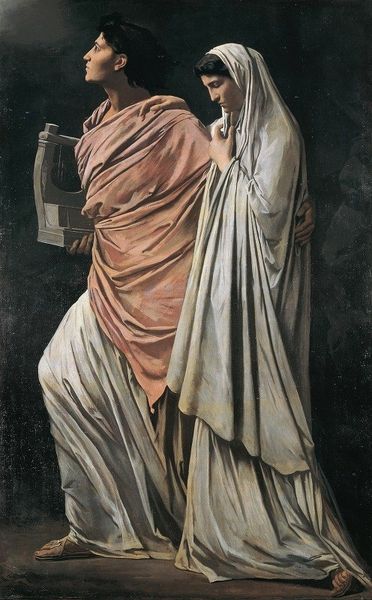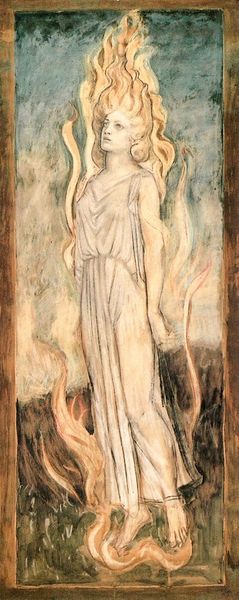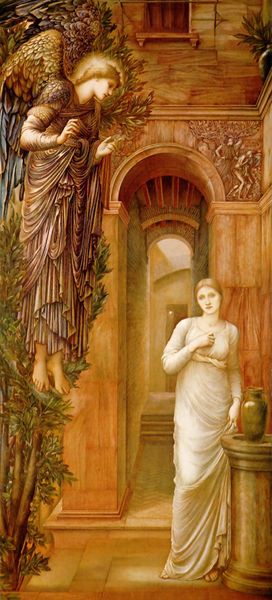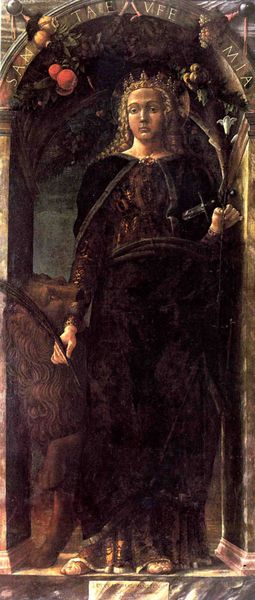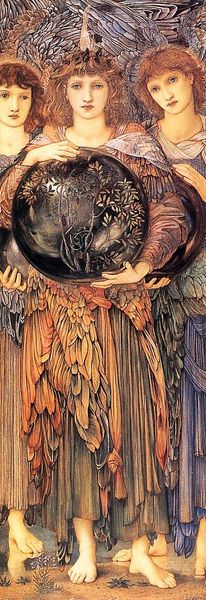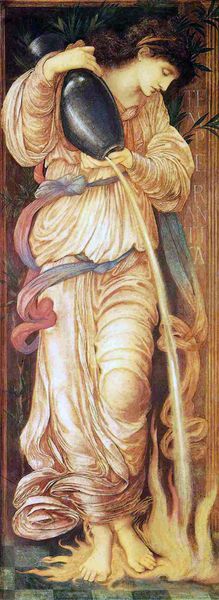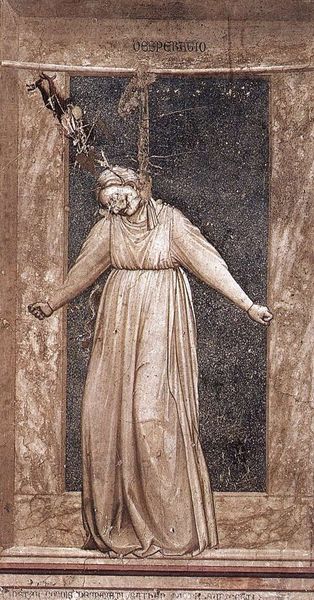
oil-paint, watercolor
#
portrait
#
oil-paint
#
figuration
#
oil painting
#
watercolor
#
symbolism
#
watercolour illustration
#
history-painting
#
pre-raphaelites
#
female-portraits
#
watercolor
Copyright: Public domain
Curator: Edward Burne-Jones's oil painting "Sibylla Delphica," created in 1868, offers us a captivating image imbued with the mysteries of classical antiquity. Editor: It strikes me first by its commanding verticality and that burnished gold palette. The folds of the Sibyl's drapery seem to mimic the spiraling smoke—an echo in form and color. Curator: Indeed, and understanding Burne-Jones, we must recognize the deep roots in Pre-Raphaelite ideals and his fascination with reinterpreting classical themes. He often sought to imbue these works with commentary on Victorian society, particularly the evolving role of women. Here, we have a female figure of power, yet constrained by the patriarchal systems of the time. She’s not simply a figure from mythology, but a symbolic representation of suppressed female wisdom and agency. Editor: I see that, but I'm drawn to how the leaves of the laurel and other plant fill the upper left with organic softness, set against the geometry of the space, almost a deliberate study in contrasts. What is its contribution? Curator: The laurel, typically associated with victory and knowledge, feels like a visual prompt for interpreting the Sybil as the embodiment of esoteric wisdom, but notice also that the laurels appear almost trapped, as if hinting at her subjugated position. She holds them almost defensively. Editor: So you’re suggesting a subtle layering of critique through symbolism and visual rhetoric. Is the composition of the elements an additional layer of this story? Curator: Precisely. We can't ignore the intense study of female subjects at the time—their positioning as vessels of spiritual and symbolic, and also constrained agency, especially within the rising tide of British colonialism. This creates intersectional tension, but it is through understanding the artistic values inherent in the formal treatment and symbol manipulation of Victorian artworks, the period's complex discourse of the artist himself can become clear. Editor: Very interesting to see it laid out as a historical narrative. Curator: It is imperative to delve beneath surface appearances and unearth the complexities within an art's framework. Editor: And now I see a richer set of considerations. Focusing on form often can often eclipse, perhaps mistakenly, this wealth of contextual discourse, wouldn’t you agree?
Comments
No comments
Be the first to comment and join the conversation on the ultimate creative platform.
